Classical swine fever (CSF) is an infectious and highly contagious viral disease that can run acute, sub-acute, chronic, and inapparent. The disease causes high mortality in swine. CSF is characterized by fever, septicemia, and hemorrhages in the skin and visceral organs. The virus is secreted through urine, feces, nasal, and ocular discharges, and the disease is transmitted through direct contact, contaminated feed and water, and inhalation.
Important Information on Classical Swine Fever
Classical swine fever affects mainly the exotic breeds and few local breeds of pigs. There are more than 5-10 outbreaks reported in one year. The CSF is also called hog cholera or the Swine Plague. The disease is sporadically seen in Asia, Europe, South and Central America, and Africa. Hog Cholera has been eradicated from North America, Newzealand, and Australia.
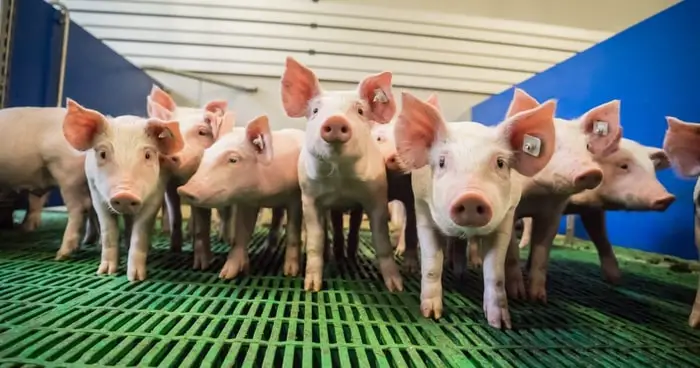
Causes of Classical Swine Fever
Pig plague is caused by an RNA virus of the Flaviviridae family belonging to the genus pestivirus. Previously the virus was called cholera virus and very similar to Bovine Pestivirus that causes Bovine Viral Diarrhea and border disease.
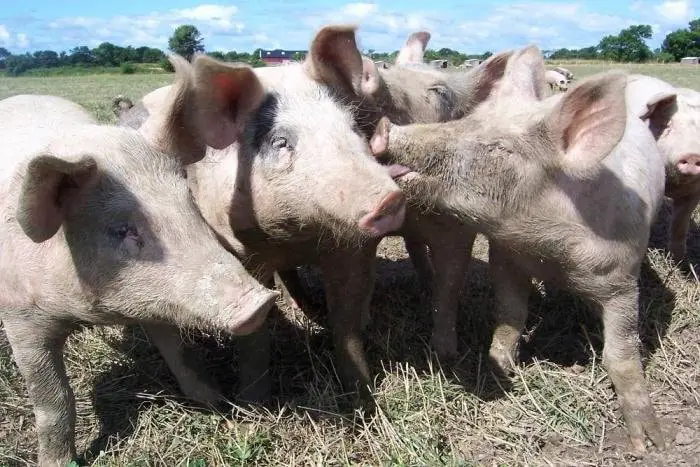
Pathogenesis of CSF
The pathogenesis of swine fever are as follows:
- The virus passes through the mucosa of the upper part of the digestive or respiratory tract to the vascular endothelium of the blood vessels, causing septicemia.
- There is hydropic degeneration and proliferation of vascular endothelium, which results in the occlusion of blood vessels.
- The characteristics changes are the atrophy of the thymus, depletion of lymphoid and germinal follicles in peripheral lymphoid tissues, renal glomerular changes, and splenitis.
Clinical Signs and Symptoms of Classical Swine Fever
The usual clinical signs of CSF are:
- The clinical signs of the disease appear 5-10 days after infection, but the incubation period may be more than 35 days in few cases.
- The disease may take either the per-acute form, acute form, or chronic form:
- Peracute form
- Common in Young pigs.
- It sets quickly and terminates fatally.
- High temperature and erythematous patches.
- Peracute form
-
- Acute Form
- Sharp rise in body temperature, which persists up to 8 days or till death.
- Dullness.
- Depression.
- Droopiness.
- Anorexia.
- Vomiting.
- Constipation.
- Severe Diarrhea.
- Weight loss
- Chronic Form
- Chronic diarrhea.
- Chronic pneumonia.
- Acute Form
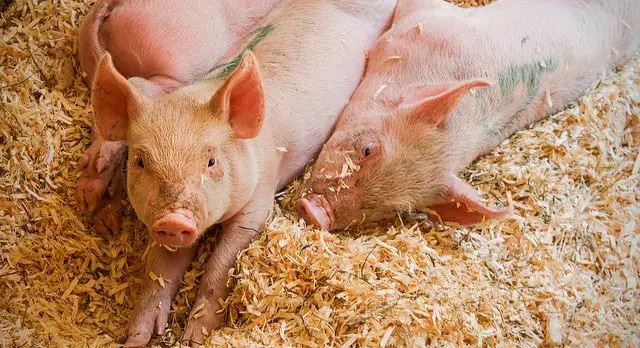
Pathological Lesions of Hog Cholera
The pathological lesions of CSF are
- In the acute form, there are many submucosal and subserosal petechial hemorrhages.
- The bleeding is mainly seen under the capsule of the kidney, around the ileocaecal valve, and in the cortical larynx.
- The hemorrhages are usually petechial and rarely ecchymotic.
- The enlargement of the lymph nodes is constant, and the spleen may contain marginal infarcts.
- Infarction in the gall bladder mucosa is not constantly found but seems to be a pathognomonic lesion.
- Congestion of liver, lungs, and bone marrow.
- Circular raised button ulcers in the colonic mucosa are highly suggestive of the disease.
- There is also nin-suppurative encephalitis, which is a sign of a presumptive diagnosis of the disease.
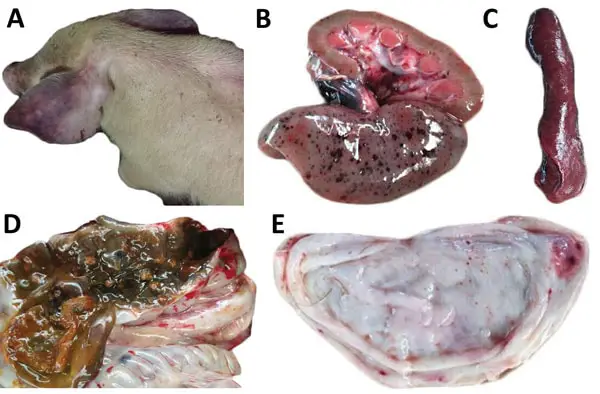
Diagnosis of Swine Plague
The routine diagnostic procedures of classical swine fever are as follows:
- History of the outbreaks, clinical signs, postmortem lesions, histopathological examination, and animal inoculation test.
- Antigen detection of CSFV using Fluorescent antibody tissue section technique (FATST)
- Virus Isolation.
- Reverse-transcriptase polymerase chain reaction (RT-PCR).
- Detection of antibody in serum by virus neutralization and ELISA.
- Neutralization test (FAVN- Fluorescent antibody virus neutralization; NLPA- Neutralising peroxidase linked essay test).
- ELISA-CSF mab coated, polyclonal-based blocking and complex-trapping blocking (CTB-ELISA).
- HA, IHA, and Iodine reduction test.
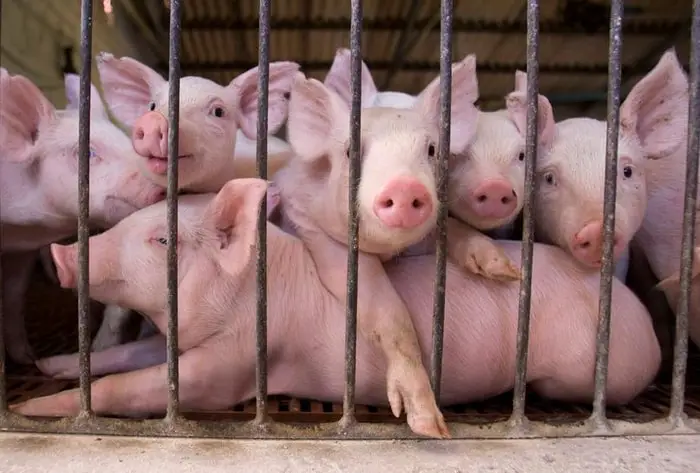
Differential Diagnosis of Classical Swine Fever
The disease should be differentiated from:
- Salmonellosis in pigs.
- Swine Erysipelas.
- Purpura Hemorrhagica.
- Colibacillosis.
- Mulberry Hear Disease.
- Necrotic Enteritis.
- Streptococcal Meningitis.
- Aujesky’s Disease.
- Salt Poisoning.
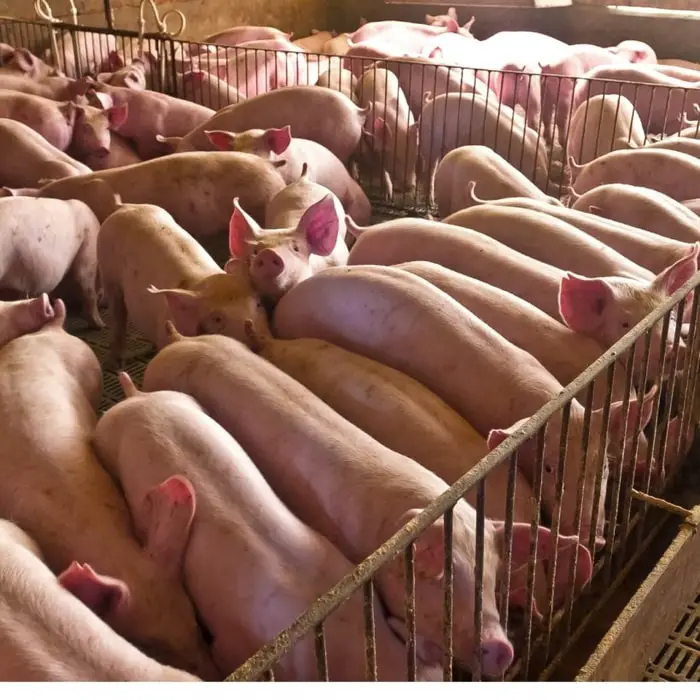
Treatment of Hog Cholera
The standard treatment procedures of pig plague are:
- The use of hyper-immune serum is the only available treatment and may be of value if given within the early stages of the illness at 50-150 ml doses.
- Supportive therapies and antibiotic coverage are commonly done in the field.
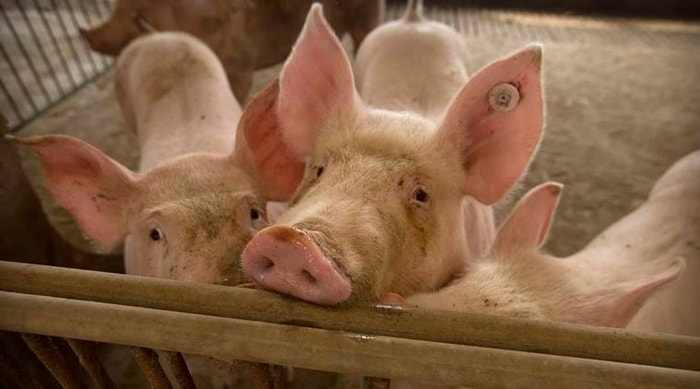
Prevention and Control of Swine Fever
The preventive measures of classical swine fever are as follows:
- In any outbreak, the infected animals are isolated, and different treatments and care are undertaken.
- The exposed animals in the herds are kept under observation, and necessary precautions are taken as per the nature of the disease.
- The best methods for control of the disease include eradication and control by vaccination.
Final Advice on Classical Swine Fever
Swine fever is a severe contagious viral disease of all swine breed. The disease is extremely severe, and affected animals died in most of the cases. The disease spread very rapidly via droppings, contaminated food, and water. You must start treatment as early as possible. Adequate preventive measures must be taken to save healthy animals and herd.